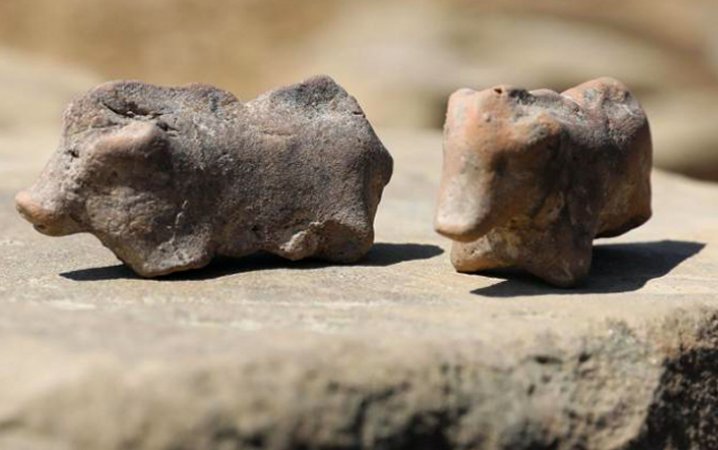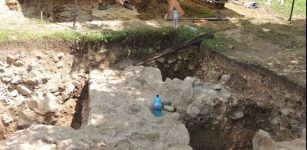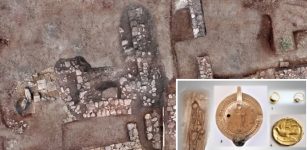Unique 3,500-Year-Old Clay Pig Figurines Used As Children’s Toys Found In Poland
Jan Bartek - AncientPages.com - These two unique clay pig figurines dating back 3,500 years were found in Poland. Someone during the Bronze Age took the time to create these rare artifacts that are only a few centimeters long, but very carefully made, with anatomical features, including nipples.
Archaeologists in Poland state this is a very rare find and the artifacts are the first of their kind.

Presentation of the archaeological find in the form of 3.5 thousand years old pig figurines, August 13th, Maszkowice (Malopolska). This is quite a rare find. The settlement where the discovery was made is surrounded by a stone wall, which is unique for settlements from this period in this part of Europe. (kf) PAP/Grzegorz Momo
The small figurines were found on Zyndram's Hill in Maszkowice (Małopolska) while archaeologists were excavating a Bronze Age settlement surrounded by Europe’s oldest monumental stone wall.
“These are the first such find of zoomorphic figurines, that is, ones depicting animals,” Dr. Marcin S. Przybyła from the Institute of Archaeology of the Jagiellonian University said.
The two pig figurines are slightly different in style suggesting they could have been made by two different artists.
“One is brighter, pale brown in color, the other was fired to be quite dark. In the case of the latter, the animal's nose is brighter. According to the archaeologist, this is probably accidental, but thanks to this the figurine becomes even more realistic,” Science in Poland reports.
“There is no discussion as to what kind of animal it is. You have to remember that pigs back then looked more like wild boars than modern-day domesticated pigs,” Dr. Przybyła said.
Whether the clay figurines were children’s toys or cult objects has not yet been determined.
The small pig-shaped objects were found in a 3,00-year-old residential house. There were many animal bones (of pigs, cattle and predators) in the building, clearly more than in other structures identified so far within the fortified settlement.
As PAP reports, “the house was probably rectangular or square (the size of a typical cottage in this place is 6 by 6 m or 8 by 6 m). Its walls were made of a lightweight braided structure covered with a thick layer of clay. The wall could be about 20 cm thick.
Archaeologists are continuing restoration work within the walls of the settlement which was discovered a few years ago.”
Dr. Przybyła said: “The fortifications defending the settlement are more than two and a half thousand years older than the monuments of Romanesque architecture. Thus, it is the oldest example of a stone wall in the history of construction in Poland.”
This year's research shows, among other things, that the walls were built on large, flat sandstone slabs (approx. 1.6 m long), which formed a perfectly flat surface. According to the researcher, they look like screed and it is clear that the fortifications were made in a very thoughtful way, and the builders had experience in similar projects.
See also: More Archaeology News
Equally old stone structures are not known in this part of Europe. Researchers are convinced that the know-how associated with their construction came with settlers from the Mediterranean or the Adriatic zone. Further evidence of this are the discovered fragments of ceramic vessels. Their forms indicate contacts with the communities living in the middle Danube basin.
According to researchers' estimates, the settlement was suddenly abandoned ca. 1550-1500 BC. However, there are no traces of an invasion or disaster. While there was a large fire more or less in the middle of its functioning, the wooden houses were later rebuilt. They were larger than the previous ones, but fewer of them were erected.
Written by Jan Bartek - AncientPages.com Staff Writer




















